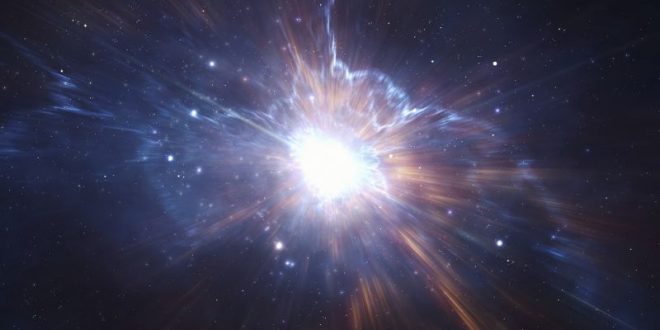University of Lisbon researchers warn that the universe could die and self-destruct because of dark energy. The basis of their theory is that 68 percent of a hypothetical form of energy – dark energy – is directly opposed to the force of gravity.
“What they have in common is that our galaxy, and all galaxies, would be ripped apart,” one of the researchers, Mariam Bouhmadi-López
Depending on how dark energy behaves, there are a number of possible end-time scenarios. In the most popular, it causes expansion to accelerate steadily over time, until galaxies, stars and atoms grow too distant and cold to interact – a Big Freeze.
But if dark energy behaves differently so that the acceleration rate is not constant and increases with time, it will eventually tear everything to bits in a kind of rip.
For that to happen, dark energy would have to take a mysterious “phantom” form, which gets denser as the universe grows. That flies in the face of everything else we observe – density normally decreases as volume expands.
“We don’t know of anything that behaves this way,” says David Spergel at Princeton University in New Jersey. “But that doesn’t mean it can’t happen.”
Bouhmadi-López and graduate students Imanol Albarran and João Morais studied three versions of this tear: the Big Rip, the Little Sibling of the Big Rip and the Little Rip. The main difference is the way in which things come undone: in a Big Rip, the universe abruptly rips itself to shreds at a fixed point in the future, but in the littler versions, it happens more gradually. “What they have in common is that our galaxy, and all galaxies, would be ripped apart,” Bouhmadi-López says. “Everything goes wrong.”
The way matter clumps can tell us which rip the universe might head for. Dark matter and regular matter are more concentrated in some areas of the universe. Those clusters lead to variations in gravity, which can make time run differently in those areas. That could mean that in some regions of the cosmos, dark energy acts at a faster or slower rate.
Bouhmadi-López and colleagues studied these differences using observations from the Wilkinson Microwave Anisotropy Probe and the higher-resolution Planck satellite, which released its latest map of the cosmos in 2015.
They concluded that the most likely scenario is the Little Rip, in which the universe’s expansion slows down just enough that we experience a gradual unzipping, rather than a cataclysmic tear (arxiv.org/abs/1611.00392).
“They’ve been able to come up with some observational signatures that are different in these models, and in the future we will be able to use that,” says Robert Scherrer at Vanderbilt University in Tennessee, who developed the Little Rip theory.
“Our galaxy, and all galaxies, would be ripped apart. Everything goes wrong“
But Robert Caldwell at Dartmouth College in New Hampshire, who came up with the Big Rip theory, is sceptical. “Right now, we can’t distinguish between these cases,” he says. “I don’t think they are justified in making any conclusion about one model over another.”
Before you start panicking though, we’ve got at least 100 billion years left until any of these grim eventualities befall our universe.
Agencies/Canadajournal

 Canada Journal – News of the World Articles and videos to bring you the biggest Canadian news stories from across the country every day
Canada Journal – News of the World Articles and videos to bring you the biggest Canadian news stories from across the country every day

